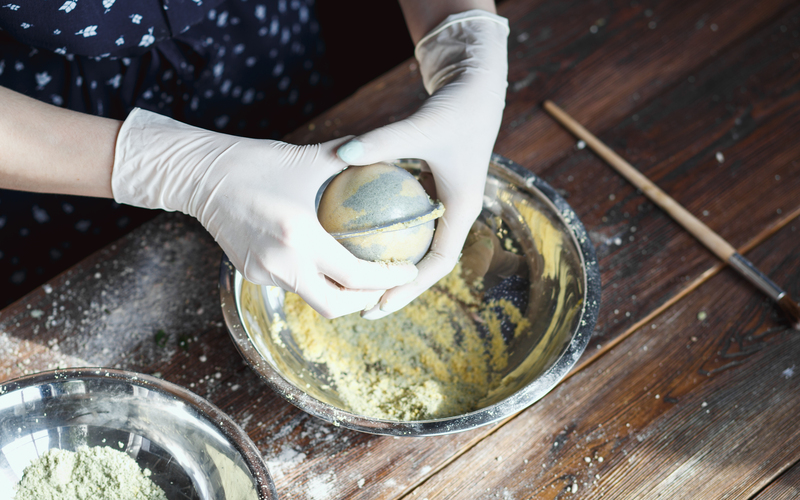Say goodbye to window sill mould with these methods
Posted on 30/08/2025
Say Goodbye to Window Sill Mould with These Methods
Mould on window sills is an all-too-common issue faced by homeowners, renters, and office dwellers alike. Not only is it unsightly, but mould poses health risks and can damage your property over time. Whether it's the result of condensation, high humidity, or poor ventilation, window sill mould isn't something you have to live with. In this comprehensive guide, we'll explore effective solutions for saying goodbye to window sill mould, and look at practical steps to prevent its return. Read on to learn the best methods for removing window sill mould and keeping your home fresh, clean, and healthy.
What Causes Mould on Window Sills?
Understanding the primary causes of window sill mould growth is essential to both eliminating and preventing it. Mould spores thrive in moist, warm, and poorly ventilated environments. Window sills, located at the meeting point of exterior and interior air temperatures, are perfect breeding grounds for mould if not cared for properly.
- Condensation: When warm indoor air meets cold window glass, moisture collects on the sills and frames.
- Poor Ventilation: Lack of air movement increases humidity around your windows, creating a welcoming environment for mould.
- Leaky Windows: Compromised seals or gaps allow rainwater or humidity to seep in.
- Houseplants and Curtains: Plants and heavy drapes close to windows trap moisture, leading to higher risk of mould on window frames.
- Neglect: Irregular cleaning and maintenance can allow mould to take hold and spread.
It's clear that preventing and getting rid of window sill mould requires a targeted approach that addresses these root causes.

Health Risks of Window Sill Mould
If you think mould on your window sill is just an eyesore, think again. Exposure to indoor mould can cause a variety of health problems, including:
- Allergic reactions (sneezing, runny nose, red eyes)
- Asthma attacks or aggravated asthma symptoms
- Respiratory issues such as coughing and wheezing
- Skin irritation and rashes
Prolonged exposure can be particularly harmful for infants, the elderly, and individuals with weakened immune systems. Therefore, removing mould from window sills is vital not only for aesthetics but for your family's health.
Methods for Removing Window Sill Mould
The key to effective window sill mould removal is a combination of proper cleaning agents, thorough technique, and long-term moisture control. Below, we detail step-by-step approaches to both cleaning existing mould on window frames and sills, as well as tips for mould prevention.
1. Safety First: Precautions Before Removing Mould
Before getting started with window sill mould removal, protect yourself from inhaling spores or exposing your skin to irritants. Here's how:
- Wear gloves, a face mask, and safety goggles.
- Open the window while cleaning to improve ventilation.
- Use old clothes that you can wash immediately after.
2. Choosing the Right Cleaning Solution
There are several effective cleaning agents to remove window sill mould. Here are common options:
- White Vinegar: Natural, eco-friendly, and powerful against most mould types.
- Baking Soda: Mildly abrasive and effective as both a cleaner and deodorizer.
- Hydrogen Peroxide (3%): Kills fungi and bacteria without toxic fumes.
- Commercial Mould Removers: Formulated for stubborn mould, especially on porous surfaces.
- Bleach Solution: (Use only for non-porous surfaces like painted wood or tiles; never mix with vinegar or ammonia.)
For a natural solution, try mixing equal parts vinegar and water in a spray bottle with a tablespoon of baking soda. For more severe infestations, undiluted vinegar or commercial mould remover may be needed.
3. Step-by-Step Guide: How to Remove Mould from Window Sills
- Prepare the Area: Remove curtains, blinds, and nearby objects. Lay down old towels or newspapers to catch drips and debris.
- Apply the Cleaning Solution: Spray the affected area generously. Let it sit for at least 10-15 minutes to penetrate and kill the mould.
- Scrub Thoroughly: Using a disposable brush or sponge, scrub the window sill and frame. Use an old toothbrush for corners and crevices.
- Rinse and Wipe: Wipe with a clean, damp cloth. For stubborn spots, repeat the process.
- Dry Completely: Use a dry towel or paper towels to remove all moisture. Keep the window open to air-dry the area.
- Dispose of Contaminated Materials: Safely discard used cleaning tools and towels in a sealed bag.
Pro Tip: For windows with wooden frames, avoid oversaturating the area to prevent wood warping or additional water damage.
4. Preventing Future Mould Growth on Window Sills
Once you've eradicated window sill mould, keeping it away is the next challenge. Here are proven strategies to maintain a mould-free environment:
- Improve Ventilation: Regularly open windows, use extractor fans, and move air with fans--especially in kitchens and bathrooms.
- Use a Dehumidifier: Keeping indoor humidity levels between 30-50% significantly reduces mould risk.
- Seal Window Gaps: Repair or replace faulty seals around your windows to keep out rain and condensation.
- Clean Regularly: Wipe down window sills and frames every week with vinegar or a mould-preventative spray.
- Relocate Houseplants: Move plants away from windows or ensure proper drainage to avoid excess moisture.
- Control Condensation: Install double glazing or insulating films, and keep curtains/blinds open during the day to let in the sun.
Dealing with Persistent or Severe Mould Problems
If mould on your window frames and sills keeps coming back or appears in multiple rooms, it could signal a deeper issue:
- Leaky gutters or roofing above the windows
- Hidden plumbing leaks or rising damp
- Structural damage to windows or external walls
In such cases, it's wise to consult a professional mould remediation service. They'll assess the cause and provide tailored treatment to ensure safe and complete removal.
Eco-Friendly Alternatives for Mould Removal
For those keen on green cleaning solutions, here are eco-friendly methods to get rid of window sill mould:
- Tea Tree Oil Solution: Tea tree oil is a powerful anti-fungal. Mix 1 teaspoon in 1 cup of water, shake well, and spray onto the mould. Do not rinse; let it air dry.
- Grapefruit Seed Extract: Mix 10 drops per cup of water and spray. Like tea tree oil, there's no need to rinse.
- Lemon Juice: The acidity kills mould and leaves a fresh scent. Use lemon juice with salt for light scrubbing.
These natural solutions are pet-safe, child-friendly, and kind to the environment. Still, make sure to spot-test any new cleaner on a small area to avoid damage or discoloration.
Maintaining Mould-Free Window Sills: Best Practices
Long-term success in preventing window sill mould depends on good habits and a little ongoing attention.
- Inspect windows seasonally: Look for early signs of condensation, cracked seals, or minor mould growth.
- Wipe up moisture daily: Especially after showers, cooking, or on foggy mornings.
- Don't block air flow: Keep furniture and curtains from crowding window areas.
- Act fast: At the first sign of mould, treat and clean the area right away.

Frequently Asked Questions: Window Sill Mould
How can I keep window sills from going mouldy in the future?
Keep the area dry, minimise indoor humidity, ensure good ventilation, and clean window sills regularly with a mould-inhibiting solution. Address any leaks immediately.
Is it safe to use bleach to clean window sill mould?
Bleach can be effective on non-porous surfaces, but for wood or painted sills, milder options like vinegar or hydrogen peroxide are safer. Never mix bleach with other cleaners, and ventilate the area well.
Can window sill mould spread to other parts of the house?
Yes, mould spores can travel through air or dust, potentially colonizing other damp areas. Prompt window sill mould removal is important to prevent spread.
Is black mould on window sills dangerous?
Black mould (Stachybotrys chartarum) is considered more hazardous than other types. If you suspect black mould, wear protective gear and consider professional help, especially if it covers more than a small patch.
Conclusion: Banish Window Sill Mould for Good
Window sill mould doesn't have to be a recurring problem in your home or office. By identifying the causes, using the right cleaning methods, and proactively preventing moisture buildup, you can say goodbye to window sill mould for good. Remember: cleaning, repairing leaks, improving air circulation, and regular maintenance are your best weapons in the battle against mould. Not only will this keep your windows and sills looking pristine, but it will also improve indoor air quality and safeguard your health.
For tough or persistent cases, don't hesitate to bring in expert help. Investing in mould prevention and removal today pays off in comfort, wellness, and property value tomorrow.
Ready to enjoy a mould-free window sill? Apply these methods, maintain good habits, and say goodbye to window sill mould once and for all!





